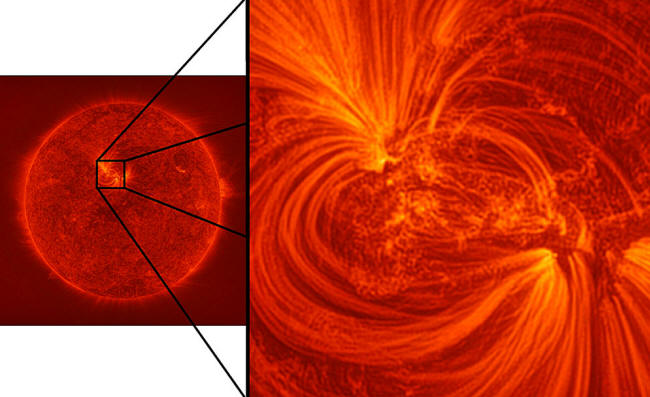|
April 13, 2020 from Thunderbolts Website
Credit: University of Central Lancashire (UCLan) and NASA.
Experiments with a positively charged sphere reveal that a torus forms above the Sun's equator.
Powerful electric fields appear between regions in the double layers, which accelerate charged particles.
Sometimes, the stored
electrical energy will be catastrophically released in a "Langmuir
burst".
Although,
Solar filaments have never been seen at this resolution.
Data indicates that they are about 500 kilometers wide, extending for many thousands of kilometers.
To those familiar with Electric Star theory, the strands are Birkeland currents:
Electric discharges in plasma form rope-like tendrils:
As previous Pictures of the Day point out, the constricted channels are known as a "Bennett pinches", or "z-pinches".
The pinched electric filaments remain coherent over long distances, forming helical structures that can transmit power through space. It is that phenomenon that scientists refer to as flux ropes.
Electric fields freely
accelerate charged particles, which move outward in opposite
directions, activating an electric current that follows the Sun's
magnetic field.
As previously written, it is spicules, rising thousands of kilometers above the photosphere, that carry ionized plasma with them.
Since the Sun is the
locus of positive charge with respect to interstellar plasma,
electric discharges penetrate the photosphere, allowing electricity
to flow into its depths.
|


